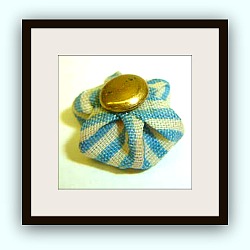

To treat boils with neem oil, apply the oil directly to the boil three to four times a day.
#Boil warm compress skin#
Neem oil has antiseptic, antibacterial, and antimicrobial properties that can help treat skin infections, including boils. This, combined with its powerful antibacterial properties, makes castor oil a great natural treatment to try for boils.Īpply a small amount of castor oil directly to the boil at least three times a day until the boil is gone. Castor oilĬastor oil contains a compound called ricinoleic acid, which is a natural but potent anti-inflammatory. It may also help keep the infection from spreading.Īpply the antibiotic ointment to the boil at least twice a day until the boil is gone. Since many people keep a tube of Neosporin in their medicine cabinet, you might not even have to look far to get it. You can’t go wrong with an over-the-counter antibiotic ointment, many of which are both fast-acting and soothing. Do this at least three times daily until the boil is gone. Apply the compress to the area for 20 minutes at a time. The salt may help dry out the pus, causing the boil to drain.ĭissolve Epsom salt in warm water and soak a compress in it. Epsom saltĮpsom salt isn’t just a relaxing remedy. Apply the paste to the boil at least twice a day. To use it topically, mix turmeric with water, ginger, or both to make a paste. To ingest it, boil a teaspoon of turmeric powder in water or milk, then let cool. You can choose to ingest turmeric powder, use it topically to treat boils, or both. Turmeric’s antibacterial and anti-inflammatory properties may help heal a boil and get rid of it quickly. Turmeric powder has antibacterial and anti-inflammatory properties. Do this daily until the boil is completely gone. Put the diluted tea tree oil on a cotton swab and apply it to the boil two or three times per day. Instead, mix five drops of tea tree oil with a teaspoon of coconut or olive oil. Tea tree oil shouldn’t be applied directly to the skin, as it can have a burning effect. These properties may help treat the bacterial infection causing the boil. Tea tree oil has strong antibacterial and antiseptic properties. Do this three or four times a day, every day, until the boil is gone. Applying heat to a boil is one of the best home remedies you can try.Īpply a warm compress to the area for 20 minutes at a time. You may find some more poultice recipes here.Heat helps increase circulation in an area, bringing more white blood cells and antibodies to the area to fight the infection. Chose an open-weave design to provide great cushion and superior absorbency, like this. To keep the poultice secure on the infected area, you need to cover the poultice with a gauze. Any type of bowl will do, but a shallow one can be preferable so you can place your hands easily. You need a medium-sized bowl to serve as a container for your bread while soaking with warm milk. Before you soak your bread with it, make sure it’s warm. There’s no specific type of milk that you can use so any kind will do. Depending on the size of your infected wound, one piece of sliced bread is enough to cover a single treatment. In fact, stale bread is even better because you can make use of it instead of throwing it away. You can use any type of bread- white, brown, or even stale. To make sure that the bandage doesn’t fall off easily, choose a self-adhesive design, like this. Alternatively, you can use a small towel if you have no washcloth at home.Īfter the plastic wrap, you need to finish it off with a bandage to secure the poultice well. You can use any washcloth you have available, but if you want comfort, make sure that you use cotton. WashclothĪ clean cloth will be used to soak into warm water. Alternatively, you can use a saucepan or pot. If you like to add some herbs, you can boil them with the water. To boil your water from scratch, you need a good kettle. You can use about 3 tablespoons of the herbs in every cup of boiling water. Some of the best herbs that you add include ginger, usnea, and tea tree. To further enhance the healing process, you can boil some herbs to make a tea compress. (UPDATE: Some people use peroxide in the water as well - But one thing we know is that puncture wounds should never be taken lightly, and personally, I'd be making a trip to the medical clinic for something like that). In some cases, it may take nothing more than a clean cloth soaked in warm (but not too hot) water. One of the most common ways people draw out an infection is by using a warm compress. Consult A Doctor If The Infection Is Not Cleared
#Boil warm compress how to#
2.2 How To Draw Out Infection With Poultices.2.1 How To Draw Out Infection With A Warm Compress.1.1.2 Option 2: Bread And Milk Poultice.


 0 kommentar(er)
0 kommentar(er)
